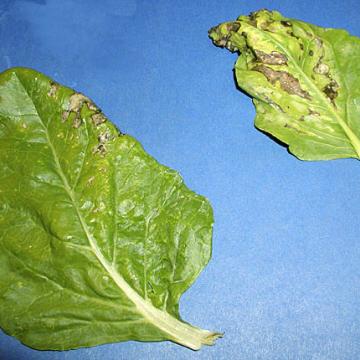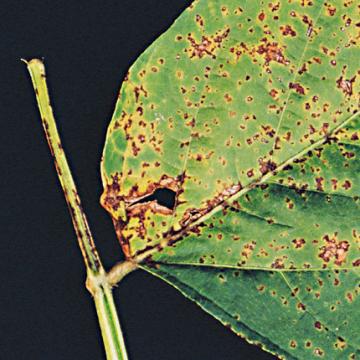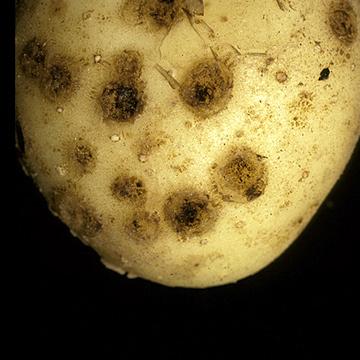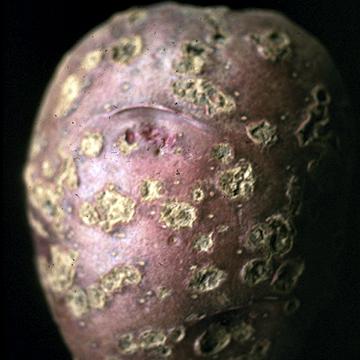DISEASE: Bacterial leaf spot of chard
HOST: Chard
Chard leaves with necrotic spots.

Bacterial leaf spot of chard | Chard
DISEASE: Bacterial leaf spot of chard
HOST: Chard (Beta vulgaris subsp. cicla)
PATHOGEN: Pseudomonas syringae pv. aptata
PATHOGEN SYNONYM: Pseudomonas aptata
SOURCE: P. Brown
DISEASE: Bacterial leaf spot of chard
HOST: Chard
Chard with necrotic, irregular leaf spots.

Bacterial leaf spot of chard | Chard
DISEASE: Bacterial leaf spot of chard
HOST: Chard (Beta vulgaris subsp. cicla)
PATHOGEN: Pseudomonas syringae pv. aptata
PATHOGEN SYNONYM: Pseudomonas aptata
SOURCE: P. Brown
DISEASE: Bacterial pustule
HOST: Soybean
Early symptoms are minute, pale green spots on young leaves. Later, small pustules form in the center of spots, best observed on underside of leaves. Spots vary in size and darken with age and lesions coalesce. Dead areas are torn away by wind.
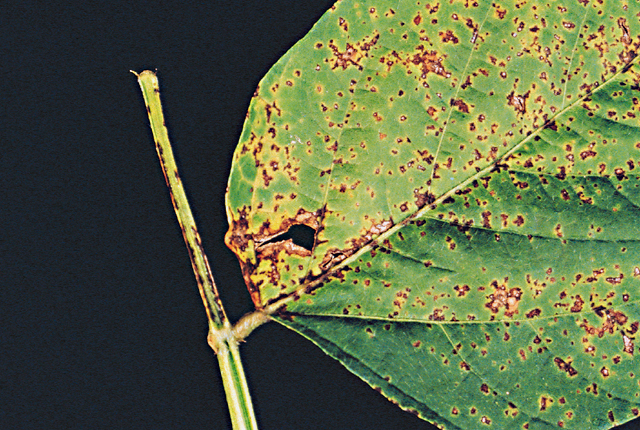
Bacterial pustule | Soybean
DISEASE: Bacterial pustule
HOST: Soybean (Glycine max)
PATHOGEN: Xanthomonas axonopodis pv. glycines
PATHOGEN SYNONYM: Xanthomonas campestris pv. glycines
SOURCE: APS
DISEASE: Common scab (Potato scab)
HOST: Potato
Symptoms of common scab vary depending upon the cultivar. The lesions can be shallow or deep, erumpent and corky, and vary in color.
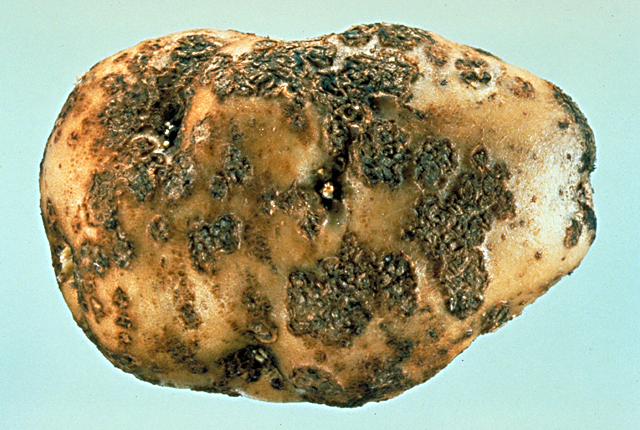
Common scab (Potato scab) | Potato
DISEASE: Common scab (Potato scab)
HOST: Potato (Solanum tuberosum)
PATHOGEN: Streptomyces scabiei
PATHOGEN SYNONYM: Streptomyces scabies
SOURCE: A. Secor
DISEASE: Common scab (Potato scab)
HOST: Potato
White-skinned tuber with sunken and superficial scab lesions.
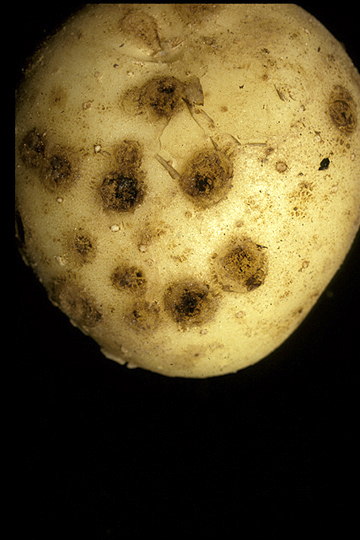
Common scab (Potato scab) | Potato
DISEASE: Common scab (Potato scab)
HOST: Potato (Solanum tuberosum)
PATHOGEN: Streptomyces scabiei
PATHOGEN SYNONYM: Streptomyces scabies
SOURCE: S. Thomson
DISEASE: Common scab (Potato scab)
HOST: Potato
Red-skinned tuber with lesions that usually penetrate less than 1 mm.
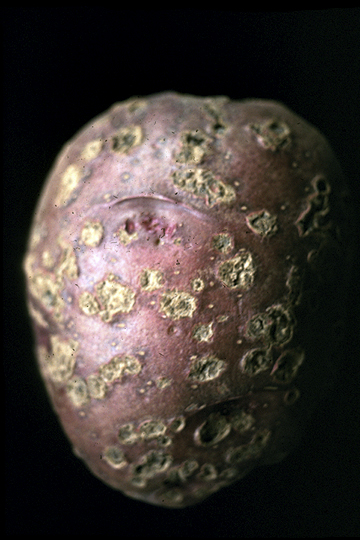
Common scab (Potato scab) | Potato
DISEASE: Common scab (Potato scab)
HOST: Potato (Solanum tuberosum)
PATHOGEN: Streptomyces scabiei
PATHOGEN SYNONYM: Streptomyces scabies
SOURCE: S. Thomson


